Sometimes, all you need are ideas to get your creative juices flowing.
So I want to give you marketing ideas to riff off. That’s why I asked 18 marketers for the most unconventional marketing ideas they’ve seen or executed.
Table of Contents
Create friction
Disqualify your audience
Use ads to get links
Trendjack… tastefully
Create content in unconventional formats
“Steal” traffic from big sites
Give people something to talk about
Leverage smaller ad platforms
Invest in future customers
Do the opposite of what everyone’s doing
Stop focusing so much on data
1. Create friction
The psychological concept of effort justification states that people tend to attribute a higher value to an outcome if they have put effort into it.
If your customer has to jump through hoops to buy your product, it means they’re motivated—and therefore likely to be a great customer.
Creating friction seems counterintuitive, but it works:
- People are willing to pay more for furniture they assemble than comparable pre-assembled items, also known as the IKEA effect.
- We previously offered a seven-day trial for $7, and it improved our lead quality.
- Dan Kennedy was once the world’s highest-paid marketing consultant, yet you could only reach him via fax.
- Longer forms are (sometimes) better. In a study by conversion rate optimizer Michael Aagaard, reducing the number of form fields decreased form conversions by 14%.
2. Disqualify your audience
In an earlier version of our homepage, we explicitly told prospects not to spend money on our trial before consuming any of our educational content. We wanted them to be familiar with our toolset and how it could solve their problems.
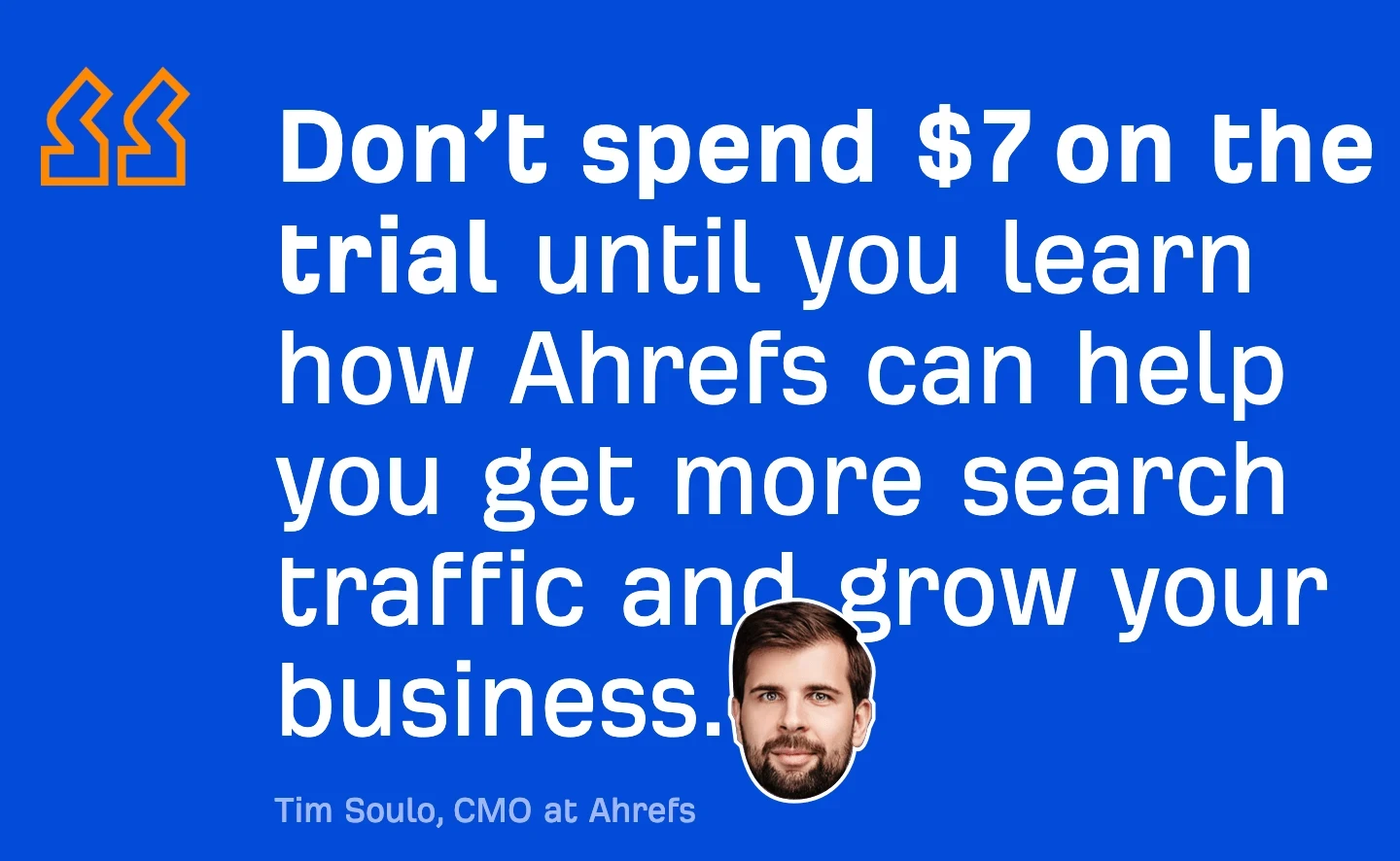
Marketing automation tool Metadata wrote a blog post telling prospects why they shouldn’t buy. New York Times bestselling author Ramit Sethi forbids anyone with credit card debt to join his programs.
Defining your audience is about describing who they are and who they are not. Not only does disqualifying your customers signal confidence, but it also prevents low-quality customers.
For example, if you’re an SEO agency, you don’t want to spend 80% of your time hand-holding a horrible customer who’s only paying 20% compared to the rest.
By the way, this is not a gimmick. It must reflect your values and absolute confidence in your product.
We dare to tell people not to take up the trial because it’s our sincere belief. We’d much prefer it if they consumed our educational material first.
Likewise for Ramit. If he publicly announces that he forbids people with credit card debt to join—but secretly lets everyone in—people will notice and his positioning will crumble.
3. Use ads to get links
Some pages earn links consistently because they rank at the top of Google. This creates a vicious cycle of SEO:
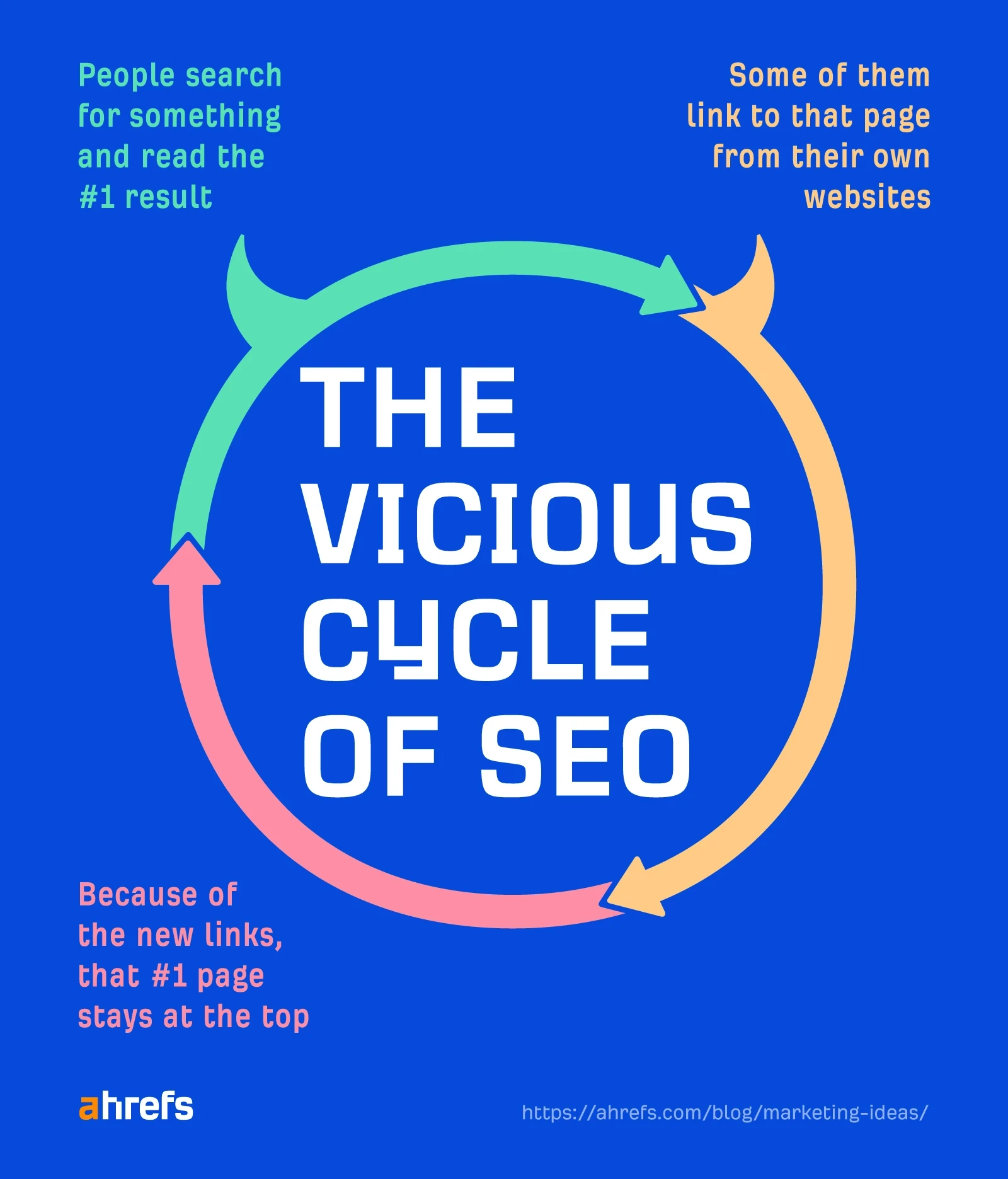
So Sam Oh wondered, “What if I could bypass all of them and be at the top of Google? Would I get links?”
And there was a way: Google Ads. With Google Ads, he could pay to have our page appear at the top of the SERPs.
In 2020, he ran an experiment where we spent around $1,200 on Google ads to promote our post on SEO statistics. It helped us acquire around 12 high-quality links and propelled the post to position #1—which we still maintain today.
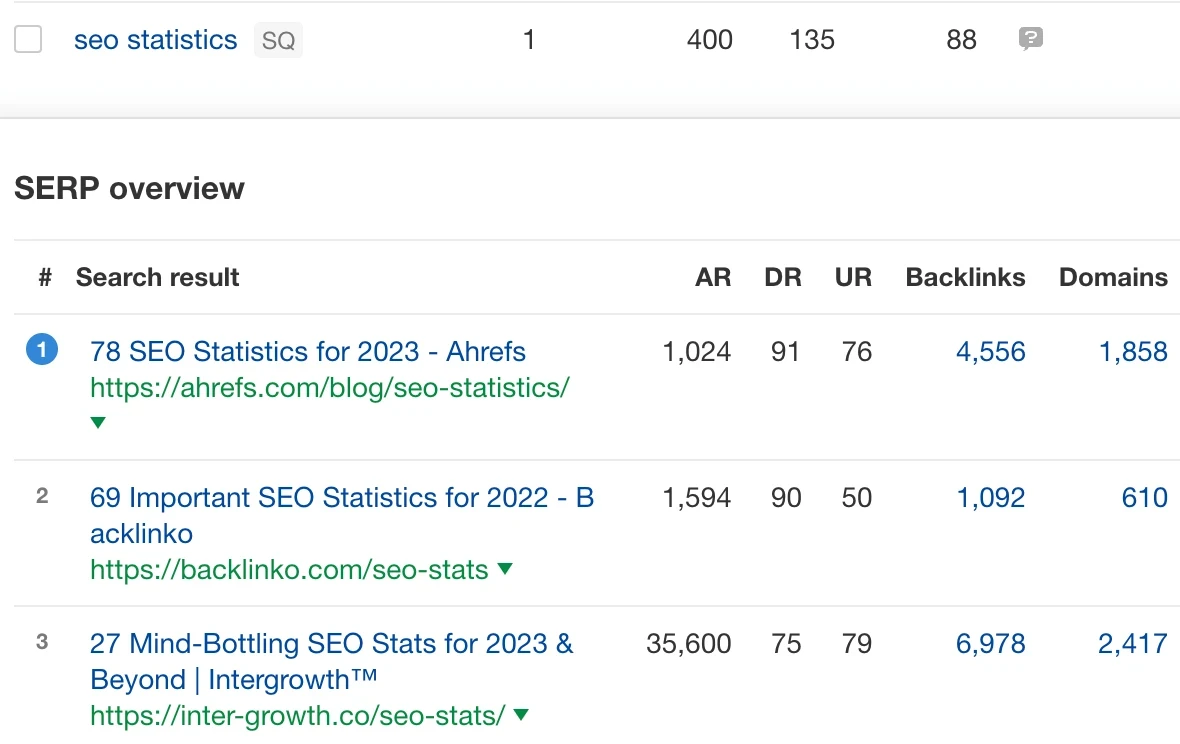
The secret behind this tactic is that he targeted queries with “link intent.” These are keywords where people, such as bloggers and journalists, are searching for resources to link to. Most of the time, they’re looking for statistics to back up their claims.
That’s why Sam specifically chose our post on SEO statistics. If you want to do something similar, you should target “statistics”-related queries too.
Here’s how to find these keywords:
- Go to Ahrefs’ Keywords Explorer
- Enter one or a few relevant keywords (e.g., SEO, content marketing, blogging)
- Go to the Matching terms report
- Search for “statistics” with the Include filter

From here, you can click the SERP button to see if these pages have links:
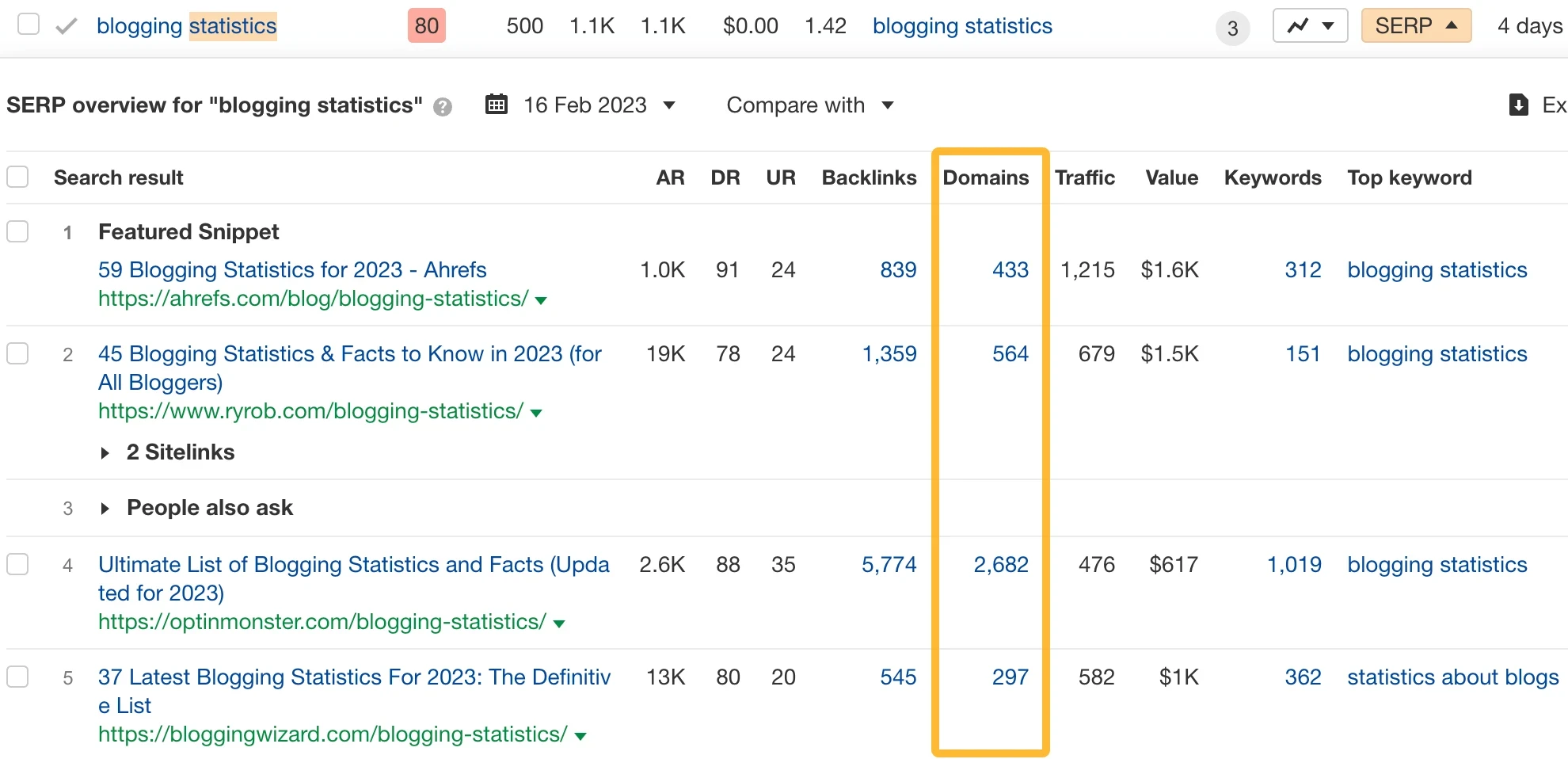
Seems like the pages ranking for “blogging statistics” have plenty of links—which makes it perfect for us to run Google Ads to.
4. Trendjack… tastefully
In 2018, Swedish financial company Advisa made a game—Brexit Bus—to indirectly comment on the British pound after Brexit was confirmed. It was a hit, scoring tons of media mentions and thousands of social shares.
Collaborative video editor Kapwing does something similar: It finds trending memes and makes videos on how to do them.
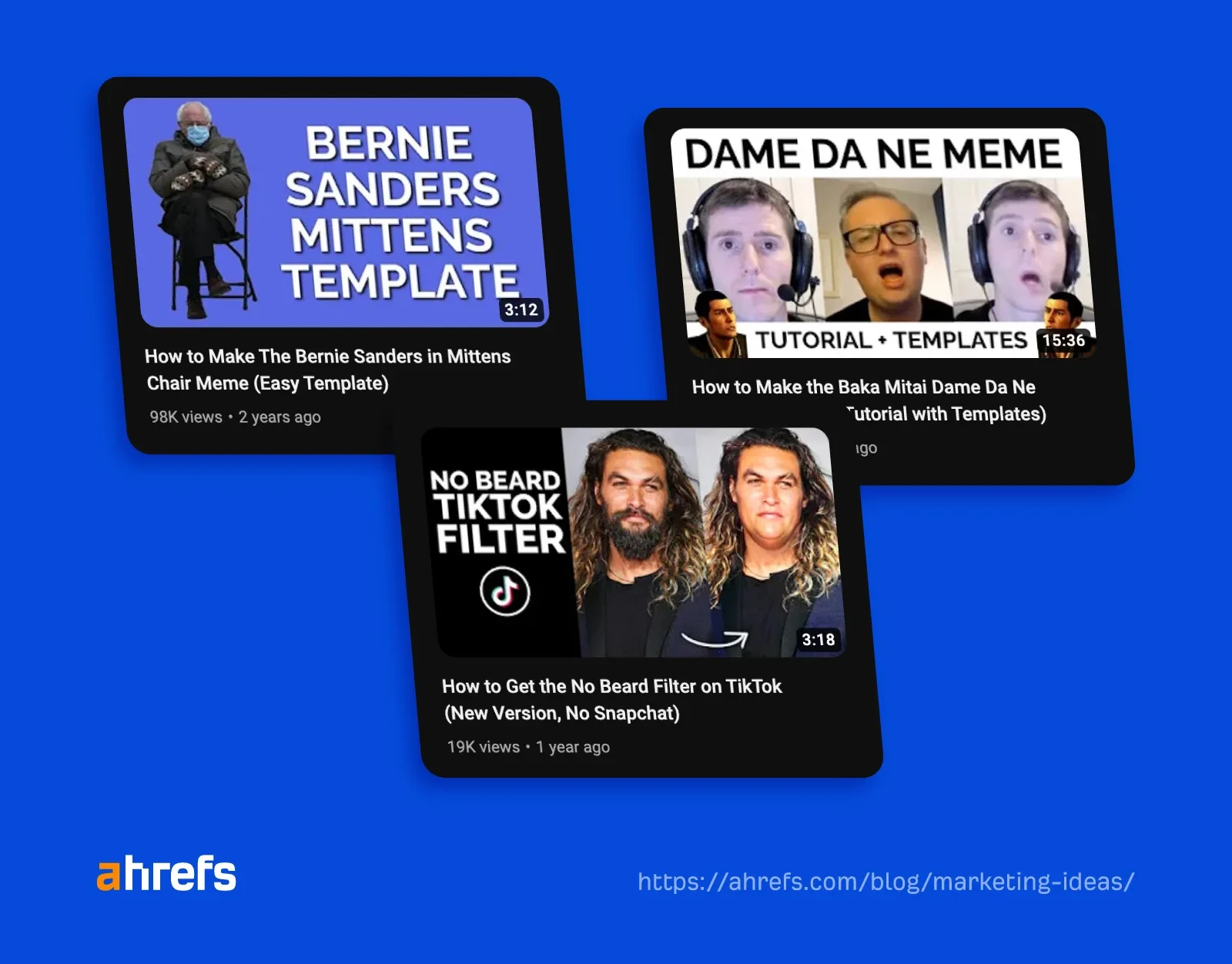
This has scored it over 180,000 subscribers and ~32 million views on its YouTube channel.
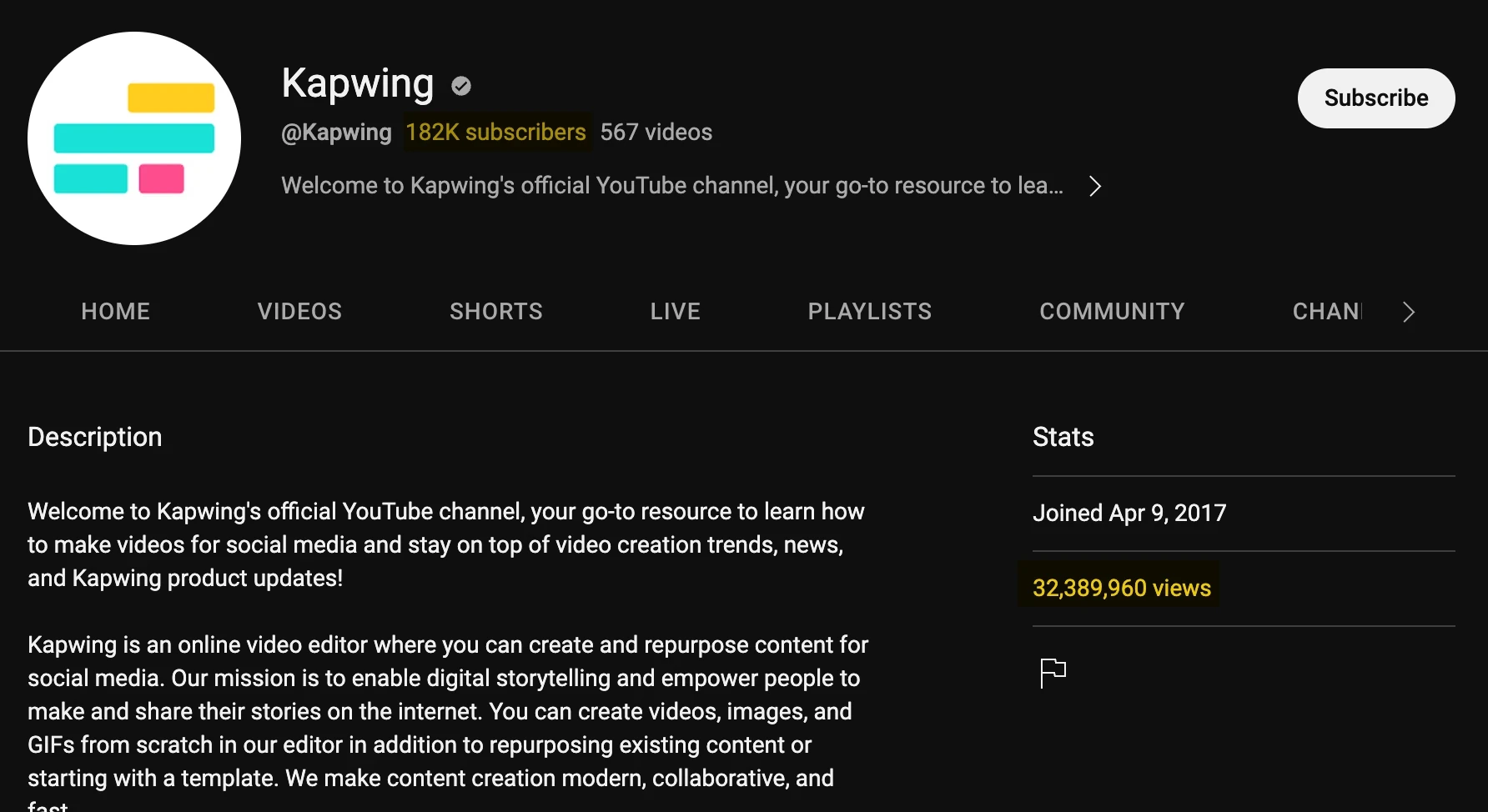
This strategy is known as trendjacking/newsjacking, and it’s finding something trending in your niche or the world and latching on to it for attention.
However, you should refrain from jumping on every trend. Not only is that impossible, but you may also damage your brand in the long term if you do it incorrectly.
Think about all the brands that jumped on the Will Smith slapping incident—do you think better of them? Probably not—after all, they’re brands, not edgy teenagers.
So how do you evaluate the right opportunity to jump in on a trend? According to marketer Amanda Natividad, you should ask yourself these five questions:
- What’s the question everyone is asking but no one else is answering?
- How can I answer that question?
- How can I comment on culture (or call out bad behavior) in a way that advances the conversation?
- Does my core value proposition directly align with this trend?
- Can I be the fastest mover on this trend?
These will set you on the path to hijacking trends to build a long-term brand rather than short-term thrills and attention.
5. Create content in unconventional formats
When it comes to content creation, most brands default to blog posts, podcasts, or videos. But these aren’t the only types of content.
There are other options too.
Books
In 1900, there were <3,000 cars in France. To encourage people to drive more, and therefore buy more tires, the Michelin brothers produced a series of guidebooks with content like tire repair and change instructions, hotels, restaurants, gas stations, and more.
Not only did it propel Michelin to become the second-largest tire manufacturer in the world, but the book is now also world-renowned for its restaurant reviews.
You may think that creating a book is hard work. It is, but you can shorten the process if you’ve already been creating content for other channels. For example:
- We turned our blog posts into a book.
- Cognism turned its Chief Marketing Officer’s LinkedIn posts into a book.
- Wondery turned its podcast series into a book.
- ASAPScience turned its YouTube videos into a book.
Quizzes
Beyond free tools, a quiz can be a great way to generate leads, segment your audience, or acquire links.
For example, Todoist has a simple Typeform quiz that lets its audience figure out which productivity method works best for them.
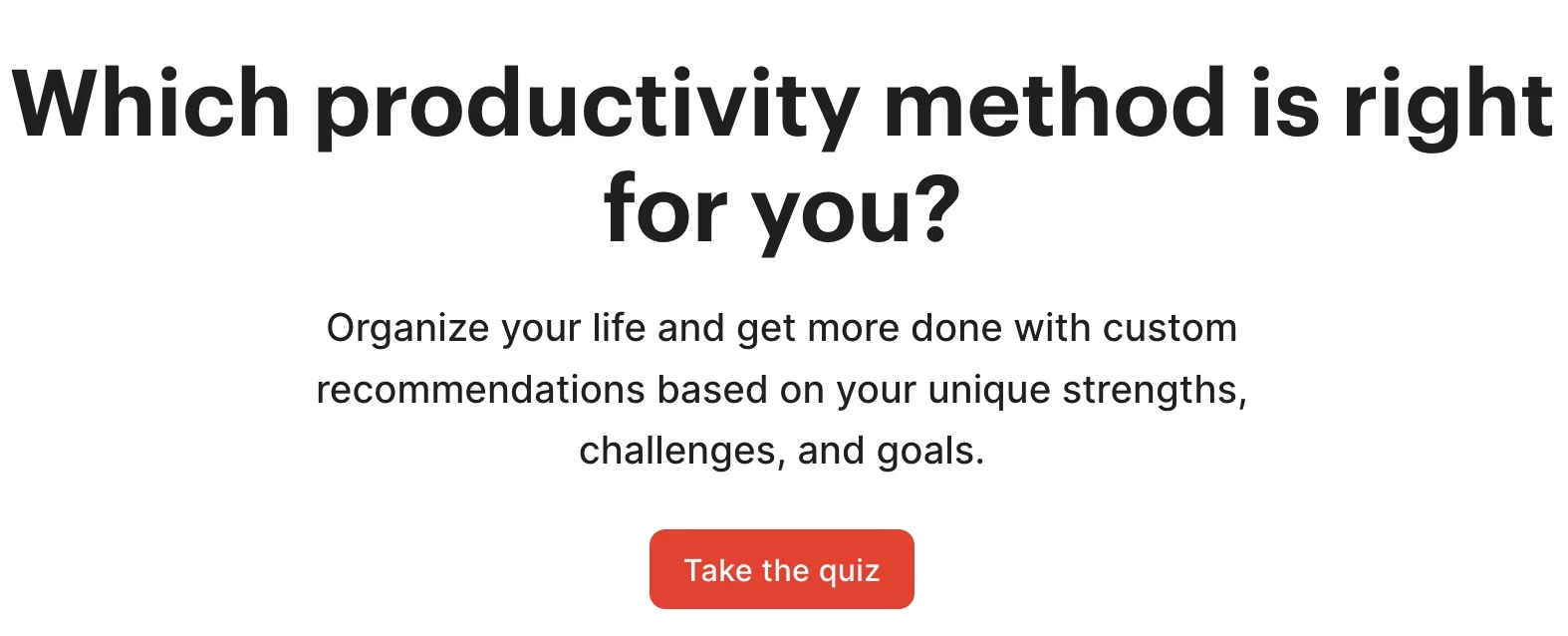
This has generated over 70,000 search visits and earned it tons of links:
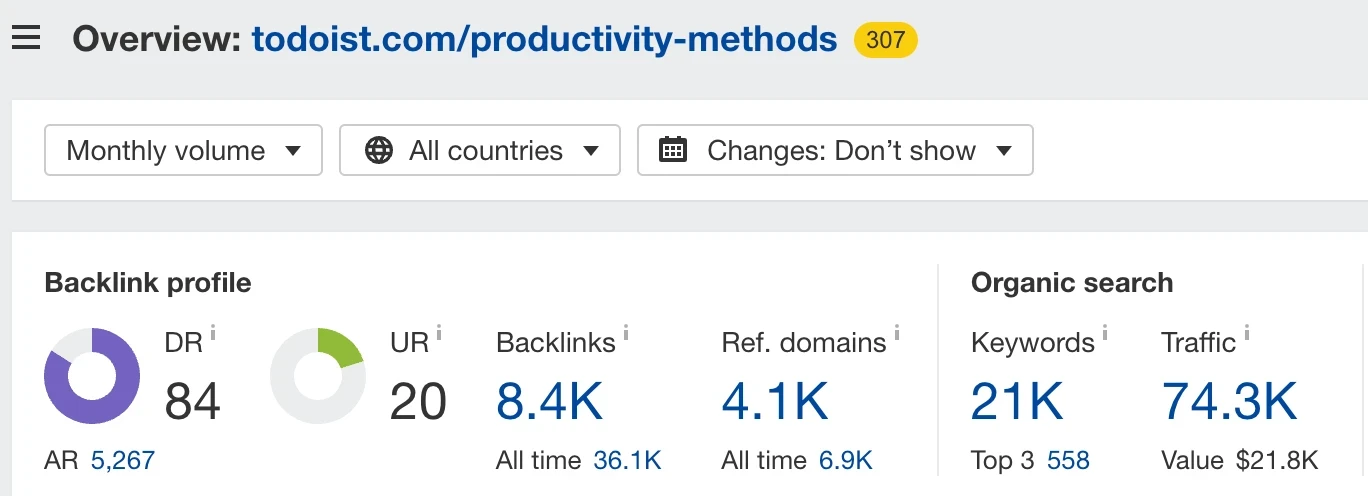
With Todoist asking for your email at the end, this likely generates a ton of leads too:
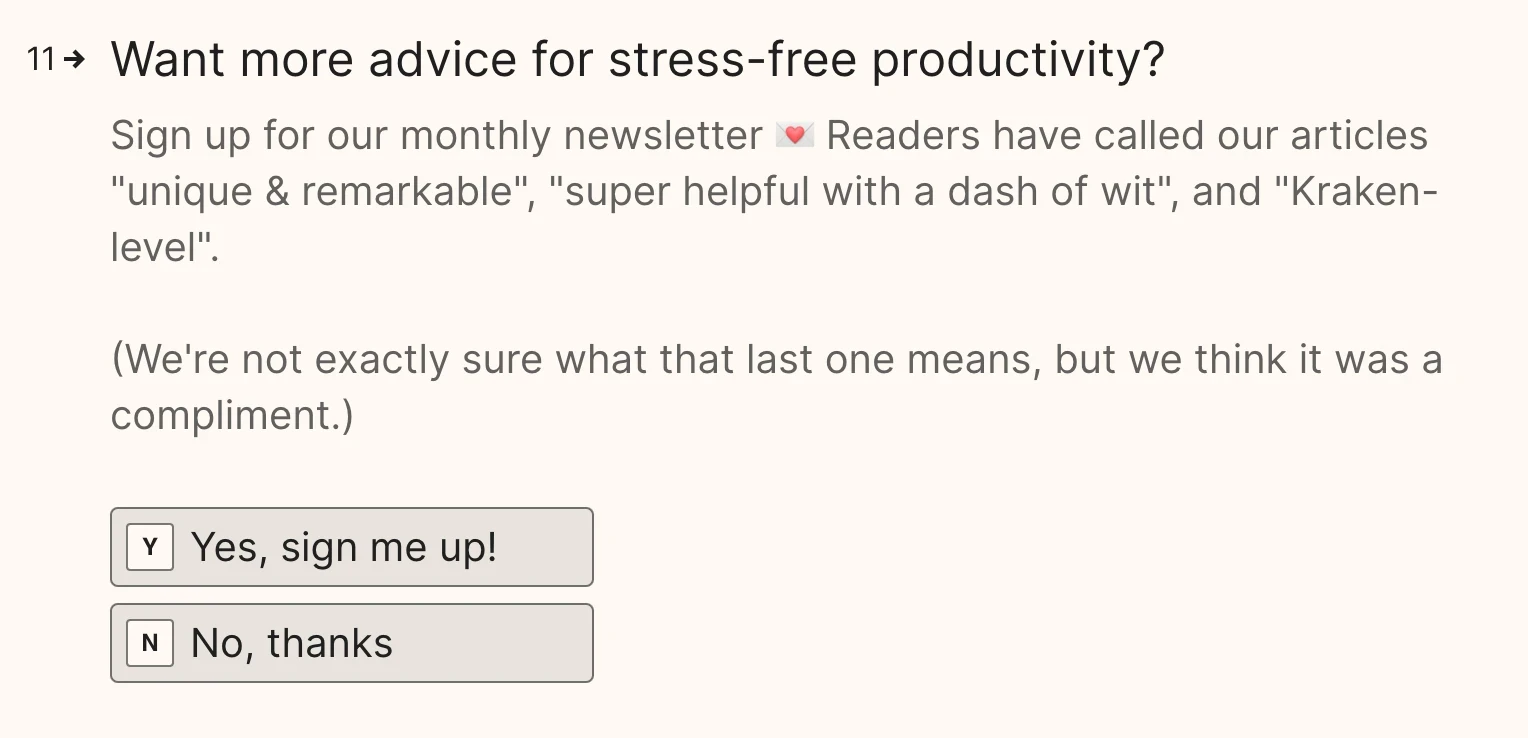
Spotify playlists
Pasta producer Barilla created Spotify playlists for the exact length of time it takes to cook different types of pasta.
It’s unconventional, thoughtful, and well aligned with the audience.
Comics
When my colleague, Rebecca Liew, worked for personal finance startup Seedly, she created a weekly comic series for Instagram:
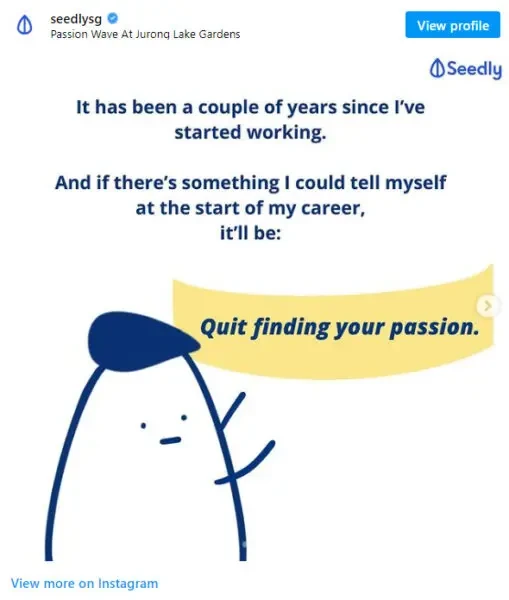
With thousands of likes for each post, it did incredibly well.
I asked Rebecca for tips on how to get started with a comic series for your brand. She advised to:
- Look at comic series you enjoy. Identify what aspect appeals to you. It can be the topic, how something is written, the character design, color palette, or more.
- Chat with other comic series founders/illustrators who have seen success.
- Design and stick to one or two easy-to-draw characters. The goal is for them to be simple to recreate over time. Give each character a short but memorable name.
- Choose your topics first before storyboarding.
- Decide on the format. Single-panel or multi-panel? This depends on the platforms you plan to publish your comic on.
- Keep sentences short and digestible.
- Get feedback from readers and iterate.
6. “Steal” traffic from big sites
Many successful startups got their initial users by creatively leveraging existing platforms.
The most famous example is Airbnb, which “hacked” Craigslist by automatically inviting everyone who listed a bed and breakfast on Craigslist to also list on its platform.
But it’s not limited to startups too—we’ve seen above how Barilla, a company more than 140 years old, leveraged Spotify for brand awareness.
Here are more examples:
- Stock photo websites – In his previous job, my colleague, Igor Gorbenko, arranged a photoshoot to take pictures of workspaces with his SaaS on computer screens. He then uploaded these images to free stock photo sites targeting relevant keywords. (These images are still being used today.)
- GIPHY – Karla & Co. pulls in 100,000 views each day from stickers it uploaded onto GIPHY.
- Reddit – Reddit is notoriously hostile to marketers. But it’s still possible to promote your brand. For example, marketer Ken Savage helped promote a blog post on Reddit, leading to 25,000 upvotes and hundreds of thousands of visitors. Another smart way is looking at how marketer Jaskaran Saini drives subscribers to his newsletter via his Reddit bio.
- Product Hunt – Zapier, Notion, Loom: These are some of the companies that started off on Product Hunt.
- Imgur – This series of images, with a simple giveaway, hit the front page of Imgur and likely drove thousands of visitors to the OP’s site.
- Hacker News – Getting on the front page of HN means thousands of visitors to your site, as Adriaan van Rossum discovered.
You likely won’t be able to replicate these examples specifically, but that’s not the point. Analyze how they did it, learn the principles behind them, and you could recreate something on another site.
7. Give people something to talk about
On October 14, 2012, millions of people watched as an Austrian skydiver, Felix Baumgartner, broke the sound barrier while jumping from the stratosphere. The entire event was sponsored by Red Bull, and it generated more than 8 million views on YouTube, plus more than 61 million impressions across all social channels.
This was likely worth tens of millions of dollars in global exposure for the energy drink.
Getting reputable sites to cover you is all about being novel and interesting.
Sometimes, it means jumping on a trend and riding the hype train. Other times, it means being the news itself. That’s why Red Bull Stratos exists. And that’s why Half.com famously paid to rename a town in the U.S. to its brand name.
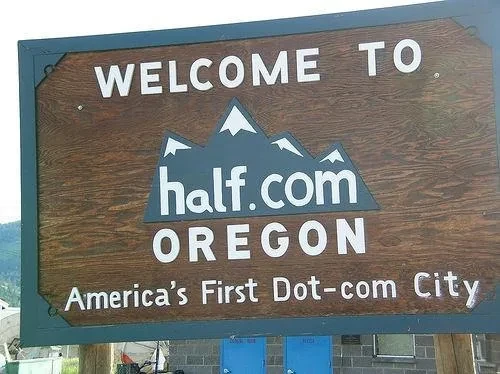
This doesn’t mean you must invest $30 million every time you want to do a PR stunt. There are many examples where a successful stunt was done at relatively low costs:
- KFC’s Twitter account secretly followed five Spice Girls and six guys named Herb (in reference to its “11 Herbs & Spices”) and waited for people to discover it.
- Burger King started liking tweets from eight years ago to promote its Funnel Cake fries.
- WePay dropped 600 pounds of ice at a PayPal conference to troll the payment company about how it freezes accounts.
- Glasses company Warby Parker hijacked New York Fashion Week with a hush mob.
8. Leverage smaller ad platforms
When it comes to paid advertising, the main choices are Facebook, Instagram, and Google Ads. But don’t forget: Other platforms have ads too.
Take for example, Quora. It’s no TikTok, but it maintains a respectable 300 million monthly visitors. It’s a great platform to reach your target audience.
In fact, Ahrefs has seen decent success running ads on Quora. For our campaigns, we’re acquiring visitors at a 40%–50% cheaper CPC than Facebook and a 60%–95% cheaper CPC than Google’s search campaigns.
So how do you get the best of Quora ads? I’ll leave it to my colleague, Michal Pecánek—who’s in charge of Quora ads—to explain:
9. Invest in future customers
When I say “invest in future customers,” I’m not referring to the unconverted people sitting at the top of the marketing funnel.
I’m referring to students.
When I asked my colleague, Nick Churick, for an unconventional marketing idea, he said:
I think it’s raising and educating your future customers when they’re students. In my opinion, it’s really important for SaaS companies. Students learning and getting used to your products at an early age is a good investment for your company.
This idea can be executed simply by providing universities or academic institutions with free access to your tools during lectures or tutorials, as we’ve done:
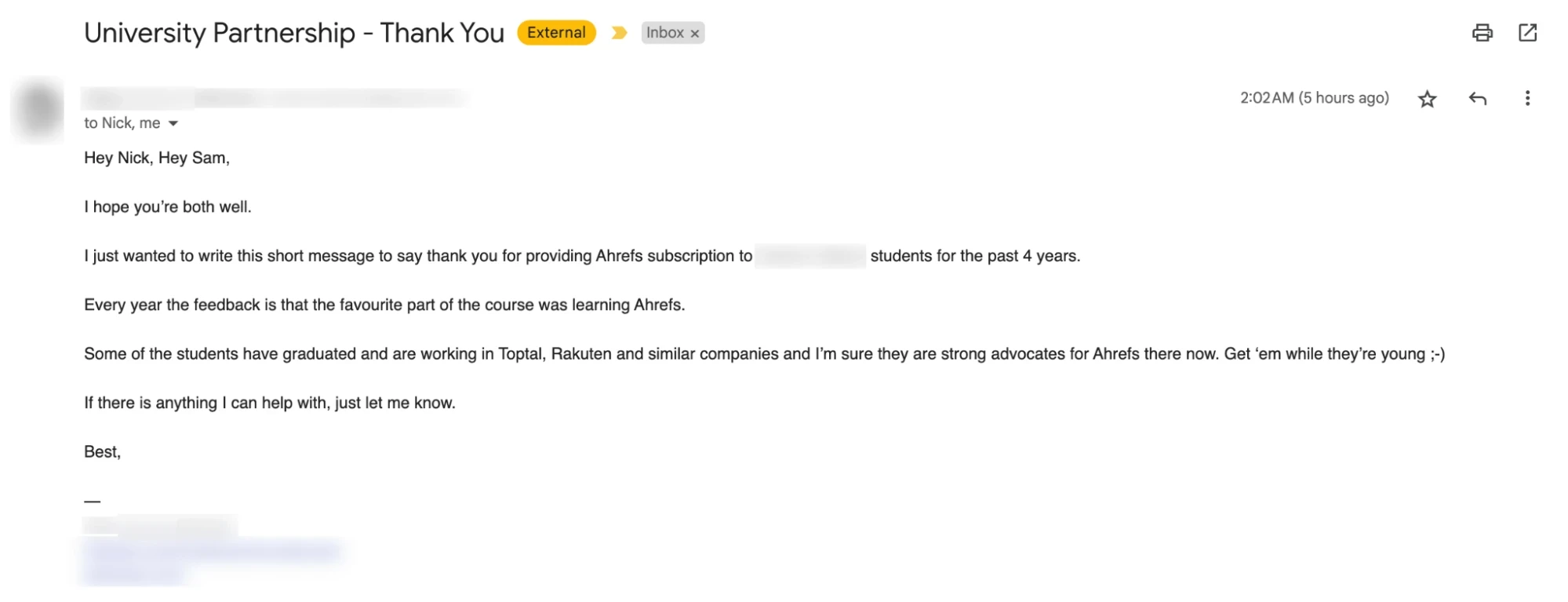
10. Do the opposite of what everyone’s doing
At Ahrefs, we don’t do retargeting. We don’t bid on competitors’ keywords. And we don’t use Google Analytics.
The list sounds blasphemous. Most of these are generally considered the best practices in the marketing world, but we’ve decided not to do them.
So far, so good.
It’s funny because a big part of marketing is really about how to stand out from the competition. Yet, modern-day marketing is the opposite—it’s about replicating your competitors’ strategy until everyone looks the same.
Everyone’s creating copycat content to rank on Google. Everyone’s using the same hook to grab attention on Twitter:
Homepages use the same illustration:
Even brands are converging to a similar style in their logos:
This is understandable on some levels. Marketing is creative, but marketers work in organizations that may not be. Rory Sutherland writes in Alchemy:
The problem that bedevils organizations once they reach a certain size is that narrow, conventional logic is the natural mode of thinking for the risk-averse bureaucrat or executive. There is a simple reason for this: you can never be fired for being logical. If your reasoning is sound and unimaginative, even if you fail, it is unlikely you will attract much blame. It is much easier to be fired for being illogical than it is for being unimaginative.
It’s easy to pitch a marketing idea by saying your competitor is already doing it. It’s much harder to pitch an original idea that no one knows whether will work.
But this is exactly why your marketing is stale or isn’t working. You’re driving yourself into a red ocean where no one stands out and competition is cutthroat. Your customers don’t know who to choose, so they select whoever catches their eye.
Unfortunately, that may not be you.
The opposite of a good idea can be a good idea too. Sometimes, it pays to do something different from your competition. Your contrarian experiment doesn’t even need to be an extreme overhaul.
Treat it as a small marketing experiment. Take a leaf from Tim Ferriss’ book and ask yourself:
What if I did the opposite for 48 hours?
11. Stop focusing so much on data
To prevent competitors from ranking for “[brand] alternative” keywords, Zendesk created a fake rock band called Zendesk Alternative.
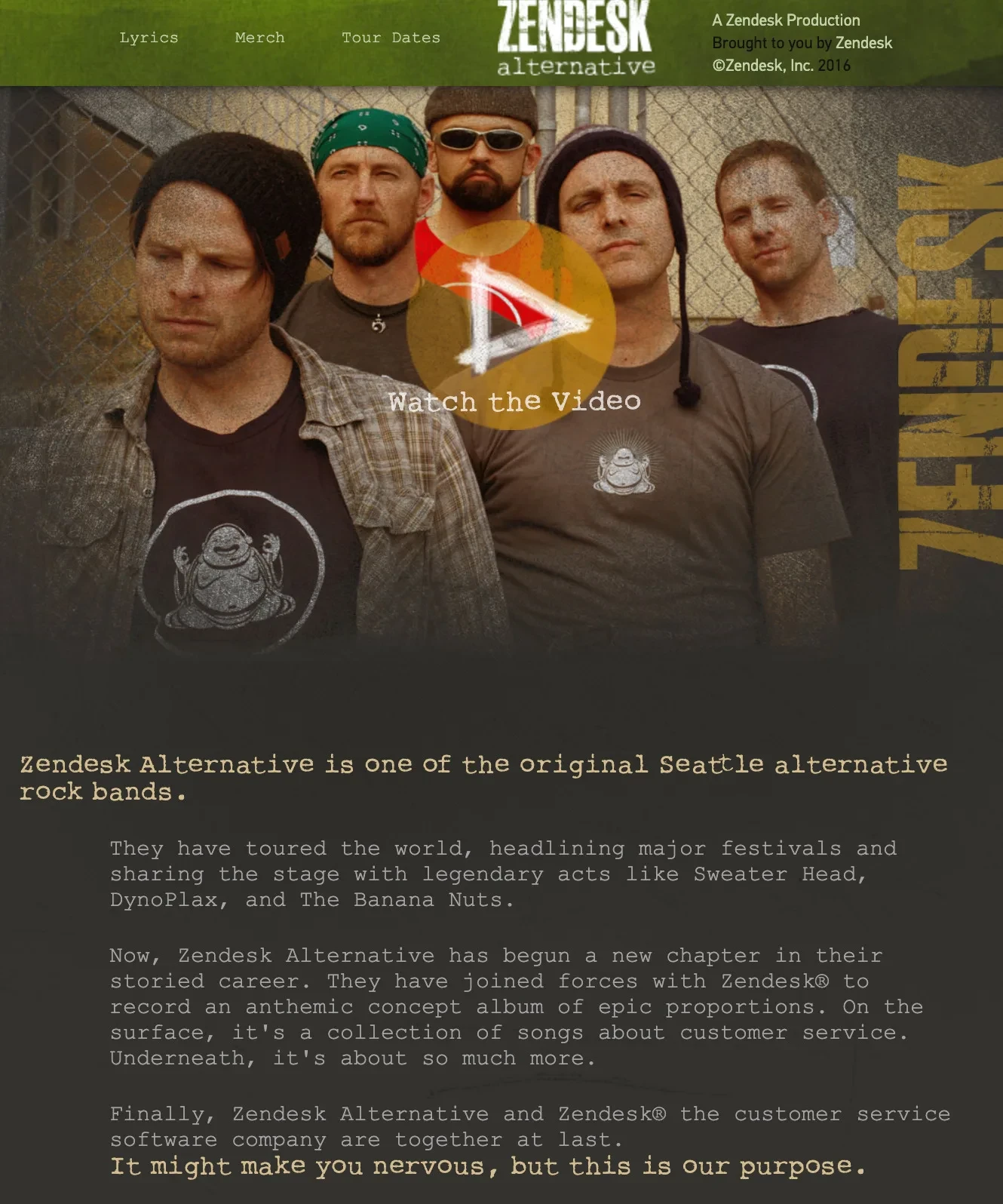
It currently ranks #2 for the keyword “zendesk alternative”:

Tired of terrible on-hold music during calls, UberConference’s (now Dialpad) co-founder, Alex Cornell, composed and performed the song “I’m on Hold” for its on-hold music.
It went viral and received tons of media mentions.
Email marketing company Mailchimp launched a campaign playing on its brand’s misspellings:
It too received a ton of media coverage.
Do you think any of the campaigns above were conducted based on data? I don’t think so—I think these companies were trying to have fun and be creative.
The marketing industry’s obsession with data can be suffocating. Marketing is inherently creative. Yet marketers are paralyzed—they can’t execute the next step without analytics and A/B testing.
It’s ironic because one of the biggest takeaways from growth marketer Lars Lofgren—after years of running growth teams—is to make major changes without testing. He writes in CXL:
If you have one step in your funnel that’s broken, iterate on that step without A/B tests.
Collect qualitative feedback from users through user tests, heat maps, surveys, and interviews. Find the biggest objections and opportunities, then design a few new versions for that step of the funnel.
Focus on major changes—don’t test small stuff. Launch a new version, run it full-time for a month, and eyeball the impact on your conversions.
Even if your funnel is fairly healthy, run 5–10 user tests on the onboarding funnel to pick up any glaring problems that need to be addressed. Don’t worry about A/B testing here. Find points of friction and get rid of them. When you find a real winner, you’ll feel it.
Iterative testing leads to a local maximum. You can end up sweating over the small stuff. Ultimately, if you want to make big changes, you have to go beyond data. Like how we changed our entire homepage without a single split test:
Sometimes, it pays to trust your gut and have fun. Especially in a creative industry like marketing.
Final thoughts
Marketing suffers from the law of shitty click-throughs. Every tactic eventually stops working because too many people are abusing them.
That’s why, rather than give you specific tactics to try, I’ve given you ideas and principles that will generate inspiration for your own.
Source from Ahrefs
Disclaimer: The information set forth above is provided by Ahrefs independently of Alibaba.com. Alibaba.com makes no representation and warranties as to the quality and reliability of the seller and products.




